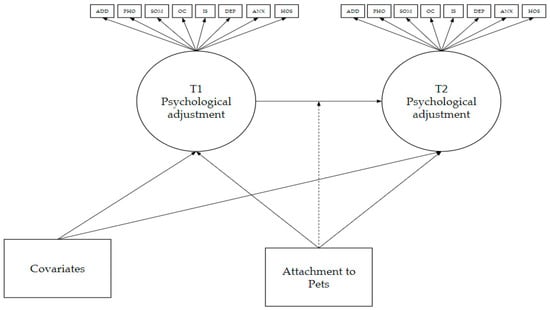<p><b>Stigma of AIDS versus COVID</b>. Respondents who were more than 60 years of age more often rated the AIDS pandemic as involving significantly more stigma than the COVID pandemic, as compared with younger respondents.</p> Full article ">Figure 2
<p><b>Demographic factors affecting aloneness during AIDS.</b> Respondents older than 70 years of age felt alone significantly less often during the AIDS pandemic than younger respondents: Node 2: x<sup>−</sup> = 1.965, SD 1.1489; Node 3: x<sup>−</sup> = 1.048, SD 1.0235.</p> Full article ">Figure 3
<p><b>Demographic factors affecting aloneness during COVID</b>. Male respondents felt alone less frequently than females, and men with dogs felt alone even less frequently than men without dogs: Node 2: x<sup>−</sup> = 1.7, SD 1.0554; Node 4: x<sup>−</sup> = 1.444, SD 1.2152; Node 5: x<sup>−</sup> = 0.98, SD 1.072.</p> Full article ">Figure 4
<p><b>Demographic factors affecting isolation during AIDS.</b> Respondents older than 70 years of age felt isolated less often during AIDS than those who were younger: Node 2: x<sup>−</sup> = 1.912, SD 1.1641; Node 3: x<sup>−</sup> = 1.048, SD 1.1609.</p> Full article ">Figure 5
<p><b>Demographic factors affecting isolation during COVID.</b> Respondents with a dog felt isolated less frequently than those without a dog: Node 2: x<sup>−</sup> = 2.061, SD 1.180; Node 3: x<sup>−</sup> = 1.677, SD 1.0623.</p> Full article ">Figure 6
<p><b>Demographic factors affecting sadness/grief during AIDS.</b> Respondents who had a cat during the AIDS pandemic more often felt sadness and grief than those who did not have a cat at that time: Node 2: x<sup>−</sup> = 2.321, SD 0.9837; Node 3: x<sup>−</sup> = 2.72, SD 1.0693.</p> Full article ">Figure 7
<p><b>Demographic factors affecting sadness/grief during COVID.</b> Respondents 40 years of age or younger felt sadness/grief more often than those who were older; those over 40 years of age through age 70 were sad or grieving more often than those over 70 years of age: Node 2: x<sup>−</sup> = 2.714, SD 0.7559; Node 4: x<sup>−</sup> = 1.832, SD 0.9417; Node 5: x<sup>−</sup> = 1.429, SD 1.0282.</p> Full article ">Figure 8
<p><b>Demographic factors associated with ratings of human support during AIDS.</b> Respondents over 60 years of age rated their human support more highly than younger respondents: those over 70 years of age gave even higher ratings; among younger respondents, gays gave higher ratings than straights: Node 3: x<sup>−</sup> = 2.308, SD 1.2506; Node 4: x<sup>−</sup> = 3.409, SD 1.272; Node 6: x<sup>−</sup> = 3.571, SD 1.1258; Node 7: x<sup>−</sup> = 4.125, SD 0.8062.</p> Full article ">Figure 9
<p><b>Demographic factors associated with ratings of human support during COVID.</b> Men reported greater human support than women, and men with dogs gave still higher ratings of their human support than men without dogs: Node 2: x<sup>−</sup> = 3.345, SD 0.934; Node 4: x<sup>−</sup> = 3.683, SD 0.9809; Node 5: x<sup>−</sup> = 4.094, SD 0.7662.</p> Full article ">








